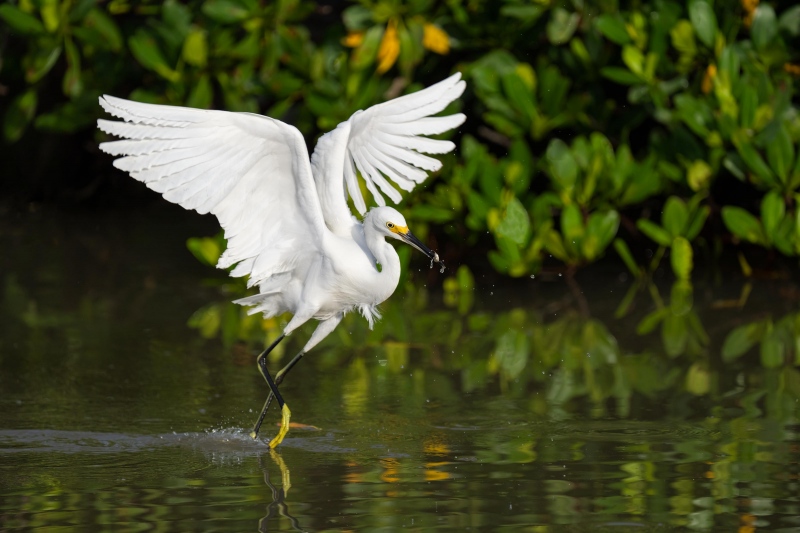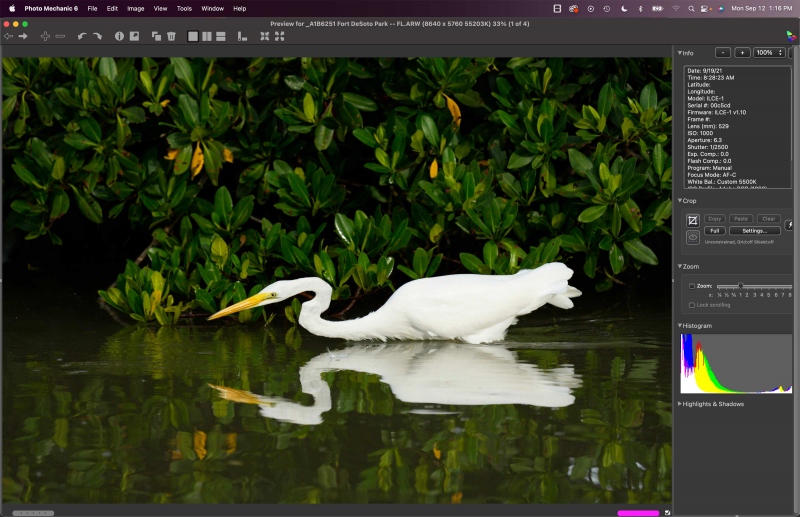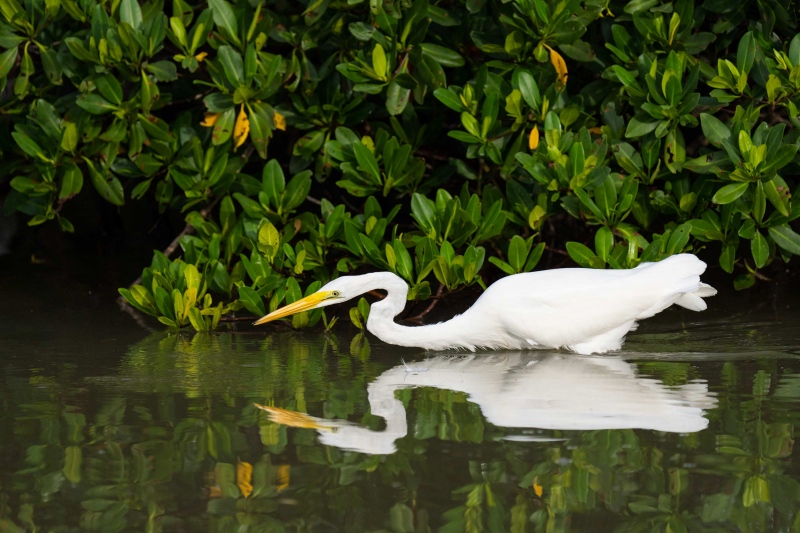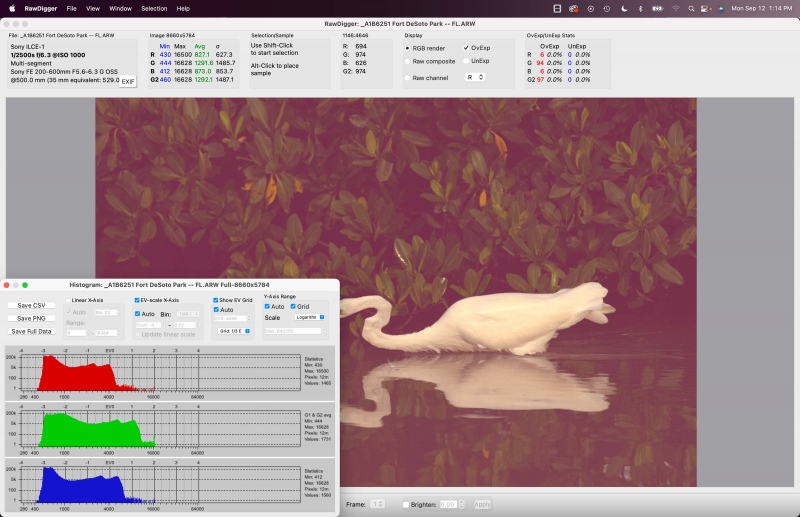Weapons of Mass Destruction Arriving
Steve Elkins of Bedfords let me know that he will be receiving two Sony 600mm f/4 GM lenses this week. These have been nearly impossible to come by. If you want to change your life, order one right now and be sure to use the BIRDSASART code at checkout to get 3% back on your credit card and enjoy free second-day air Fed-Ex. Click here to order yours now and make sure that you get one of the two (even though it will show up as Place Back Order.) That done, it would not hurt to shoot Steve an e-mail.
Use the discount code to purchase a Sony 600mm f/4 GM and receive any BAA book, e-guide, or e-book free.
|
Fort DeSoto in fall is rife with tame birds. All the images on this card were created at Fort DeSoto in either late September or very early October. I hope that you can join me there this fall. Click on the composite to enjoy a larger version. Clockwise from upper left to center: Long-billed Curlew, Marbled Godwit, Caspian Tern, Great Egret, Sandwich Tern with fish, Willet, Black-bellied Plover threat display, Snowy Egret, 2-year old Yellow-Crowned Night-Heron, juvenile Yellow-Crowned Night-Heron. |
The Fall 2022 Fort DeSoto Instructional Photo-Tours
Fall 2022 Fort DeSoto Instructional Photo-Tour #1
3 1/2 Days: Tuesday 27 September through the morning session on Friday 30 September 2022. $1899.00 includes three working lunches. Limit six photographers/Openings five.
Fall 2022 Fort DeSoto Instructional Photo-Tour #2
3 1/2 Days: 7 October through the morning session on Monday 10 October 2022. $1899.00 includes three working lunches. Limit six photographers.
Fall 2022 Fort DeSoto Instructional Photo-Tour #3
3 1/2 Days: Monday 31 October through the morning session on Thursday 3 November 2022. $1899.00 includes three working lunches. Limit six photographers/Openings: 5.
Fort DeSoto, located just south of St. Petersburg, FL, is a mecca for migrant shorebirds and terns in fall. There they join hundreds of egrets, herons, night-herons, and gulls that winter on the T-shaped peninsula. With any luck at all, we should get to photograph one of Florida’s most desirable shorebird species: Marbled Godwit. Black-bellied Plover and Willet are easy, American Oystercatcher is pretty much guaranteed. Great Egret, Snowy Egret, Great Blue Heron, Tricolored Heron, and White Ibis are easy as well and we will almost surely come up with a tame Yellow-crowned Night-Heron or two. And we will get to do some Brown Pelican flight photography. In addition, Royal, Sandwich, Forster’s, and Caspian Terns will likely provide us with some good flight opportunities as well. Though not guaranteed, Roseate Spoonbill and Wood Stork might well be expected. And we will be on the lookout for a migrant passerine fallout in the event of a thunderstorm or two.
On this IPT, all will learn the basics and fine points of digital exposure. Nikon and Canon folks will learn to get the right exposure every time after making a single test exposure, and SONY folks will learn to use Zebras so that they can be sure of making excellent exposures before pressing the shutter button. Everyone will learn how to approach free and wild birds without disturbing them, to understand and predict bird behavior, to identify many species of shorebirds, to spot the good situations, to choose the best perspective, to see and understand the light, and to design pleasing images by mastering your camera’s AF system. Most importantly, you will surely learn to evaluate wind and sky conditions and understand how they affect bird photography. And you will learn how and why to work in Manual mode (even if you’re scared of it). The best news is that you will be able to take everything you learn home with you so that you will be a better photographer wherever and whenever you photograph.
There will be a Photoshop/image review session during or after lunch (included) each full day. That will be followed by Instructor Nap Time.
These IPTs will run with only a single registrant (though that is not likely to happen). The best airport is Tampa (TPA). Once you register, you will receive an e-mail with Gulfport AirBnB information. If you register soon and would like to share an AirBnB with me, shoot me an e-mail. Other possibilities including taking a cab to and from the airport to our AirBnB and riding with me. This saves you both gas and the cost of a rental car.
A $600 deposit is due when you sign up and is payable by credit card. Balances must be paid by check two months before the trip. Your deposit is non-refundable unless the IPT sells out with six folks, so please check your plans carefully before committing. You can register by calling Jim or Jennifer during weekday business hours at 863-692-0906 with a credit card in hand, or by sending a check as follows: make the check out to: BIRDS AS ART and send it via US mail here: BIRDS AS ART, PO BOX 7245, Indian Lake Estates, FL 33855. You will receive a confirmation e-mail with detailed instructions, clothing, and gear advice. Please shoot me an e-mail if you plan to register or if you have any questions.
|
Clockwise from upper left to center: Long-billed Curlew, juvenile Tricolored Heron, Marbled Godwits, Great Blue Heron, juvenile Pectoral Sandpiper, Wood Stork, smiling Sea Scallop, Ruddy Turnstone scavenging needlefish, Great Blue Heron sunset silhouette at my secret spot, and southbound migrant tern flock blur. |
Up Early, Stay Out Late!
Obviously, folks attending an IPT will be out in the field early and stay late to take advantage of the sweetest light and sunrise and sunset colors (when possible). The good news is that the days are relatively short in early fall. I really love it when I am leaving the beach on a sunny morning after a great session just as a carful or two of well-rested photographers are arriving. The length of cloudy morning sessions will often be extended. Click on the composite to enjoy a larger version.
Spoonbills at DeSoto
Over the past years, Roseate Spoonbills have become regular visitors to Fort DeSoto Park. I know when and where to find them and can teach you to approach them successfully. Do consider joining me on a DeSoto IPT.
What’s Up?
I headed down to the lake at 8am on Monday and took an easy 1.6-mile rope flow walk. And I did my bursts after an early nap. I did skip my swim but hope to get back in the pool today.
Which, BTW, is Tuesday 13 September. Wherever you are, and whatever you are doing, I hope that you too have a great day. This blog post took about 90 minutes to prepare and makes one hundred seventy-two days in a row with a new one.
Please remember to use the B&H and Amazon links that are found on most blog pages and to use the BIRDSASART discount code at checkout when purchasing your new gear from Bedfords to get 3% back on your credit card and enjoy free second-day air FedEx. Please, also, consider joining a BAA IPT. You will be amazed at how much you will learn!
Follow me on Instagram here. I am trying to feature both new and old images, especially images that have not appeared recently on the blog. Or search for birds_as_art.
BIRDS AS ART Image Optimization Service (BAA IOS)
Send a PayPal for $62.00 to birdsasart@verizon.net or call Jim at 863-692-0906 and put $62.00 on your credit card. Pick one of your best images and upload the raw file using a large file sending service like Hightail or DropBox and then send me the link via e-mail. I will download and save your raw file, evaluate the exposure and sharpness, and optimize the image as if it were my own after converting the raw file in Adobe Camera Raw. Best of all, I will make a screen recording of the entire process and send you a link to the video to download, save and study.
Induro GIT 304L Price Drop
Amazingly, we have two, brand-new-in-the-box Induro GIT 304L tripods in stock. They are $699.00 each (were $799.00) and the price now includes the insured ground shipping to the lower 48 states. Weekday phone orders only: 863-692-0906. Order yours here while they last.
Got Mangroves? Consider Mangrove Soup
|
|
|
I also created this image on 19 September 2021 at Hidden Lagoon on a DeSoto Fall IPT. Again, I used the handheld Sony FE 200-600mm f/5.6-6.3 G OSS lens (this time at 600mm) and The One, the Sony Alpha 1 Mirrorless digital camera. ISO 1000. The exposure was determined via Zebras with ISO on the rear dial: 1/3200 sec. at f/6.3 (wide open) in Manual mode. RawDigger showed that the raw file brightness was perfect. AWB at 8:28:23am on a mostly sunny morning. Tracking: Zone/AF-C Bird/Eye Detection AF was active at the moment exposure and performed perfectly. Click on the image to view a hi-res version. Image #1: Snowy Egret with tiny baitfish
|
Mangroves: Not My Favorite Backgrounds
Stands of mangroves around the world often encircle small bodies of water — bays, lagoons, and estuaries, that act as nurseries for many species of fish. The fish, in turn, attract many species of birds in search of a meal. As the tides ebb and flow, schools of small fish may become trapped in small pools, providing easy pickings for the birds. Finding such situations can provide great action for bird photographers. And that is exactly what I found for my group on the morning of 19 September 2021.
Mangroves, however, are difficult backgrounds to work with, especially on sunny days when the specular highlights on whitewash or water droplets can be especially distracting, as can the occasional dead or dying yellow leaf. The closer the mangroves are to the subject, the more distracting they can be. Note that on cloudy days mangroves can provide lovely green backgrounds and lovely dark green reflections in the water.
Note: the specular highlights on the leaves in this image were eliminated using the clean-up techniques detailed below.
|
|
Image #2: The Photo Mechanic screen capture for the Great Egret hunting image |
The Original
I included the Photo Mechanic screen capture here for two reasons:
1- To show that on occasion, the Photo Mechanic histogram may be correct.
2- So that you could see the specular highlights in the white-wash on the mangrove leaves.
Click on the screen capture to enlarge and note the ugly and distracting specular highlights on the leaves as well as the ugly and distracting dead and dying yellow leaves.
|
|
|
I created this image on 19 September 2021 at Hidden Lagoon on a DeSoto Fall IPT. I used the handheld Sony FE 200-600mm f/5.6-6.3 G OSS lens (at 529mm) and The One, the Sony Alpha 1 Mirrorless digital camera. ISO 1000. The exposure was determined via Zebras with ISO on the rear dial: 1/2500 sec. at f/6.3 (wide open) in Manual mode. RawDigger showed that the raw file brightness was dead-solid perfect. AWB at 8:28:23am on a mostly sunny morning. Tracking: Zone/AF-C Bird/Eye Detection AF was active at the moment exposure and performed perfectly. Click on the image to view a hi-res version. Image #2A: Great Egret hunting
|
Which is the Best Image?
Which is the stronger optimized image, Image #1, or Image #2A? Why?
Image Optimization Tips
I spent about twenty minutes cleaning up the specular highlights on the leaves and the white reflections in the lower right-hand corner in Image #2. Here are some tips on using the Spot Healing Brush (my personalized shortcut “J”) to soften or eliminate specular highlights:
1- Work large by clicking on an area with the Zoom Tool (Z).
2- When eliminating small specks as needed, it is OK to use the Spot Healing Brush as a stamp.
3- When softening or eliminating a series of specular highlights on a leaf, use the Spot Healing Brush by dragging the cursor over the highlights.
4- If you are less than happy with the results using the Spot Healing Brush, an alternative is to use the Patch Tool (my personalized shortcut “P”) to encircle small groups of specular highlights and then hit Shift + Delete, the default keyboard shortcut for Content-Aware Fill.
5- Note that I rarely if ever use the Clone Stamp Tool (S) for image clean-up work.
Everything mentioned above, including and especially my time-saving Keyboard Shortcuts, is detailed in Digital Basics II.
|
|
Image #2B: The RawDigger screen capture for the Great Egret hunting image |
Dead-Solid Perfect Exposures
On the RawDiggger Adapted (Pink) histogram, the Green channel for dead-solid perfect exposures will show significant data right up to the 16,000 line. The 203 OvExp pixels (out of 51 million) are all in the specular highlights on the mangrove leaves (as seen in the Photo Mechanic screen capture above). with perfect exposures, the Green channel will reach the 8000 and 2/3 line.
Ho Hum, Another Perfect Exposure
What can I say? The combination of Zebras live in the viewfinder (with your camera set up properly) and post-capture study of the raw files in RawDigger makes it pretty much child’s play to come up with perfect exposure after perfect exposure. It would be impossible to overstate how much I have learned by studying RawDigger and how much better my exposures have become since I started with the program almost two years ago. The raw file brightness for today’s featured image is perfect with the G channel almost making the 16000 line. In other words, the raw file brightness is perfect.
RawDigger — not for the faint of heart …
Nothing has ever helped me learn to create perfect exposures to the degree that RawDigger has. I think that many folks are reluctant to learn that most of their images are underexposed by one or more full stops and that highlight warnings in Photoshop, Lightroom, Capture One, and your in-camera histogram are bogus as they are based on the embedded JPEGs. Only your raw files tell the truth all the time. Heck, I resisted RawDigger for several years … Once you get over that feeling, RawDigger can become your very best exposure friend no matter what system you are using. On the recent IPTs and In-the-Field sessions, we have demonstrated that fact. Convincingly.
The RawDigger Adapted (pink) Histogram
In the RawDigger e-Guide, you will learn exactly how to set up the Adapted “pink” RawDigger Histogram and how to use it to quickly and easily evaluate the exposure or raw file brightness of images from all digital cameras currently in use. RawDigger was especially helpful to me as I have struggled with R5 exposures and learned my new camera body, the Sony Alpha a1.
|
|
RawDigger e-Guide with Two Videos |
The RawDigger e-Guide with Two Videos
by Arthur Morris with Patrick Sparkman
The RawDigger e-Guide was created only for serious photographers who wish to get the absolute most out of their raw files.
Patrick and I began work on the guide in July 2020. At first, we struggled. We asked questions. We learned about Max-G values. We puzzled as to why the Max G values for different cameras were different. IPT veteran Bart Deamer asked lots of questions that we could not answer. We got help from RawDigger creator Iliah Borg. We learned. In December, Patrick came up with an Adapted Histogram that allows us to evaluate the exposures and raw file brightness for all images created with all digital camera bodies from the last two decades. What we learned each time prompted three complete beginning to end re-writes.
The point of the guide is to teach you to truly expose to the mega-Expose-to-the-Right so that you will minimize noise, maximize image quality, best utilize your camera’s dynamic range, and attain the highest possible level of shadow detail in your RAW files in every situation. In addition, your properly exposed RAW files will contain more tonal information and feature the smoothest possible transitions between tones. And your optimized images will feature rich, accurate color.
We teach you why the GREEN channel is almost always the first to over-expose. We save you money by advising you which version of RawDigger you need. We teach you how to interpret the Max G values for your Canon, Nikon, and SONY camera bodies. It is very likely that the Shock-your-World section will shock you. And lastly — thanks to the technical and practical brilliance of Patrick Sparkman — we teach you a simple way to evaluate your exposures and the raw file brightness quickly and easily the Adapted RawDigger histogram.
The flower video takes you through a session where artie edits a folder of images in Capture One while checking the exposures and Max-G values in RawDigger. The Adapted Histogram video examines a series of recent images with the pink histograms and covers lots of fine points including and especially how to deal with specular highlights. The directions for setting up the Adapted Histogram are in the text.
If we priced this guide based on how much effort we put into it, it would sell it for $999.00. But as this guide will be purchased only by a limited number of serious photographers, we have priced it at $51.00. You can order yours here in the BAA Online Store.
Typos
With all blog posts, feel free to e-mail or to leave a comment regarding any typos or errors.





















I much prefer the pose and feather detail in 1. However I thought eye in both 1 and 2A had been over-sharpened and lightened. If I haven’t explained that properly – when both images popped up in detail the eyes just appeared “too much”. Also the water under the head in 2A appeared extra sharp adding to my first impression for that image.
Thanks, Neil. You might be on to something. But …
With both images I selected the eye and the lores only, applied some Topaz Sharpen AI, and then reduced that layer to 75% opacity. The eyes were not lightened. And there was no sharpening below the bird’s head in Image #2. So either you have amazing eyesight or you are imagining things. Anyhoo, I will cut back to 50% next time I sharpen an eye with Sharpen AI.
with love, artie
ps: I will post #1 to BPN where there are lots of eagle-eyed folks.
Hey Artie,
I like both images today! That being said, these old eyes think image 1 is much better than 2A.
Wonderful spread wing position, raised leg, fish in bill with water droplets coming off and I also find the mangroves in the background less distracting.. I actually like the mangrove background in image #1.
Thanks for your erudite comment.
with love, artie
ps: I kept about ten more from that feeding spree.
Numbers 1 and 2 and 2A are very well made photos! And they are also fun to look at them!
Hi Artie, The Fort Desoto IPTs sound great.
A small picky point/typo”
“(though that is not unlikely to happen).” is a double negative.
Remove either the “not” or the “un” in unlikely.
Jordan
Thanks, Jordan. Brain typo fixed. So, come on down 🙂
with love, artie
You said the dead/dying brown leaves were distracting, yet you left them alone. Any reason?
As an aside, I have to say that I much prefer the old format for your blog posts, with “What’s up” at the start……. Just saying, as they say!
There are too many yellow, light green, and dead and dying leaves (of various colors) to do anything about. And replacing them would be a grand chore.
As for the new format, thanks for your comment. When the IPTs begin filling, I can go back to the old format 🙂
with love, artie